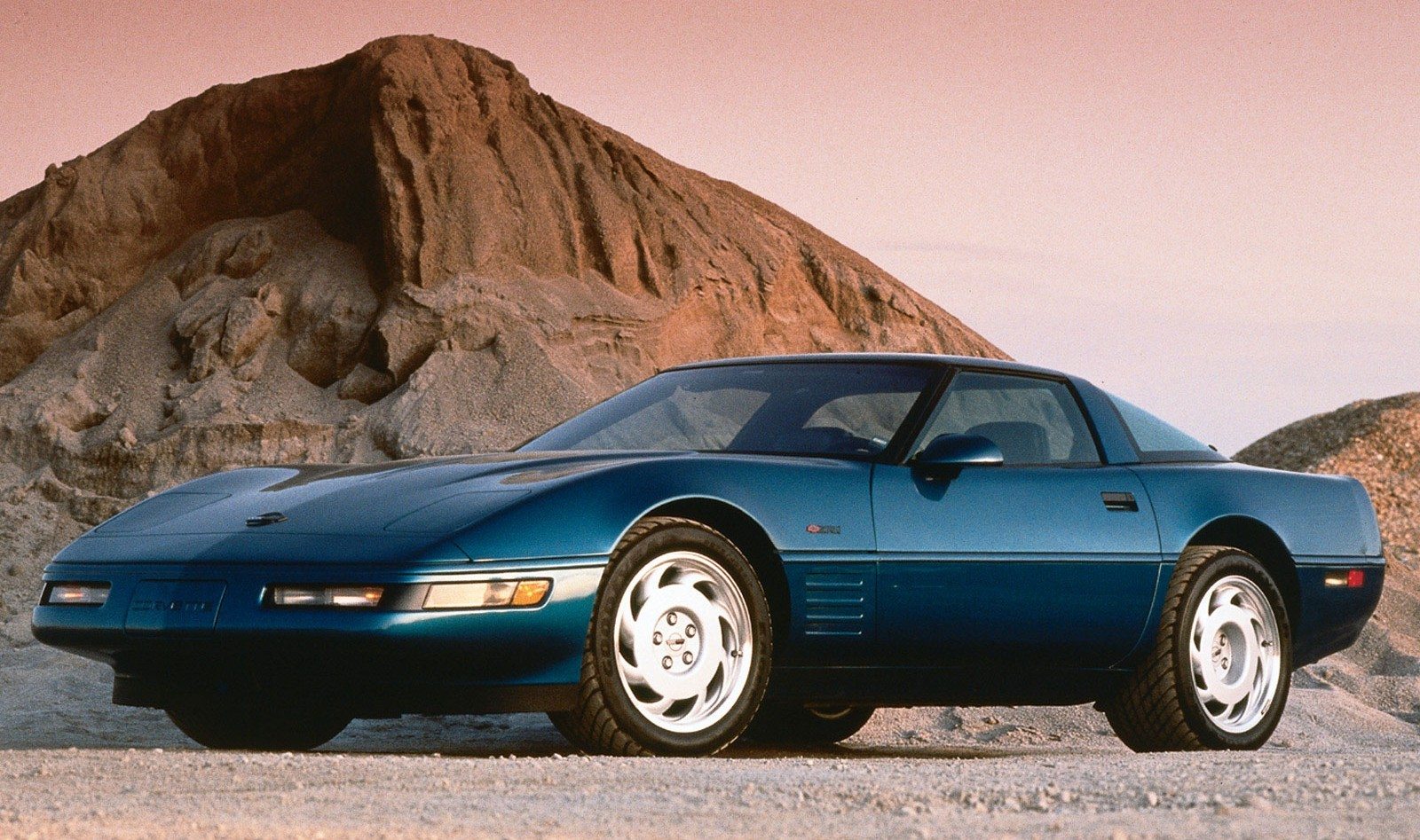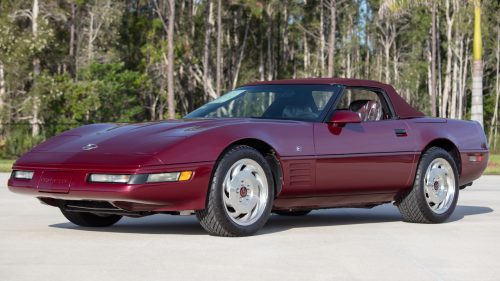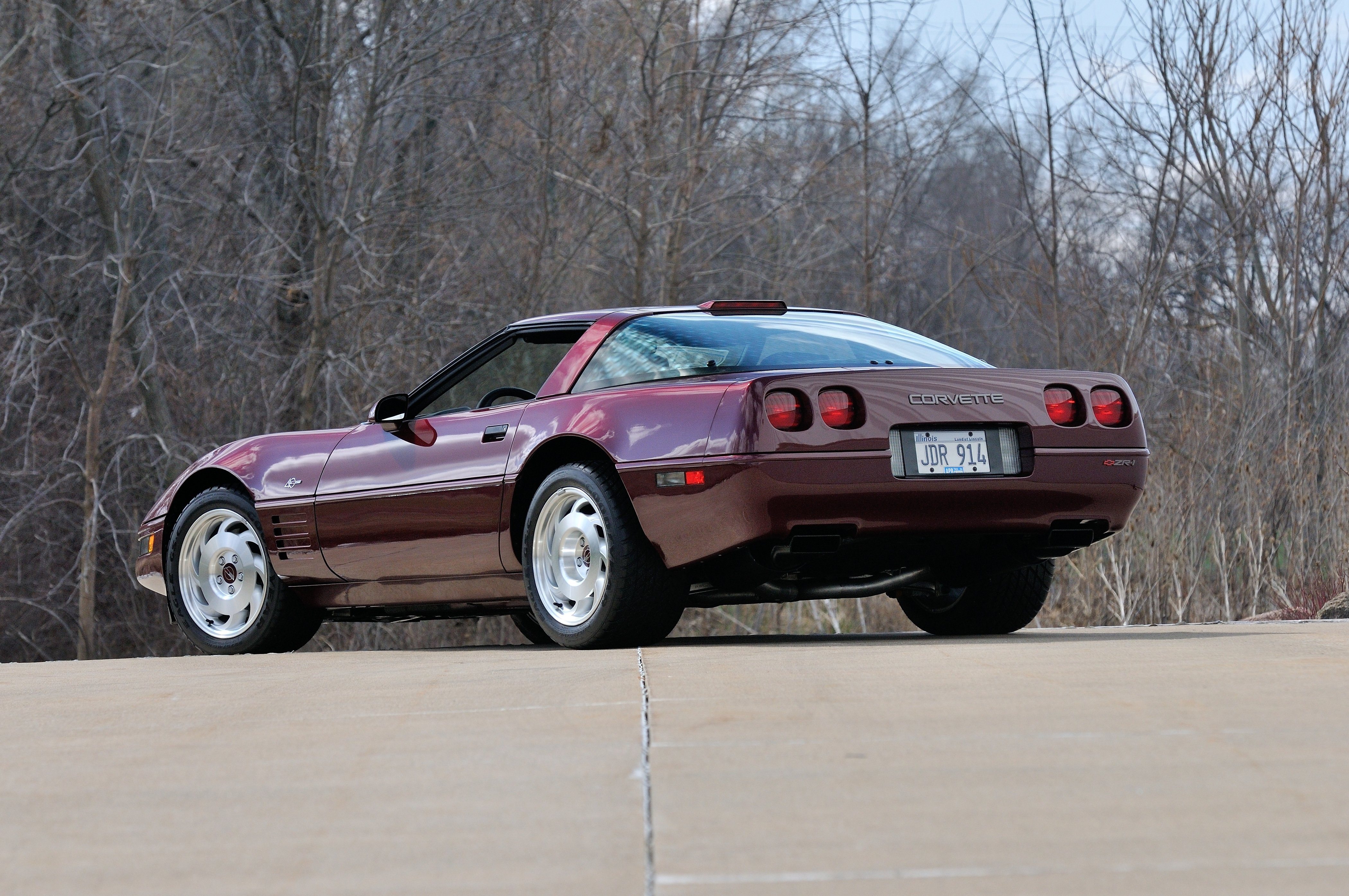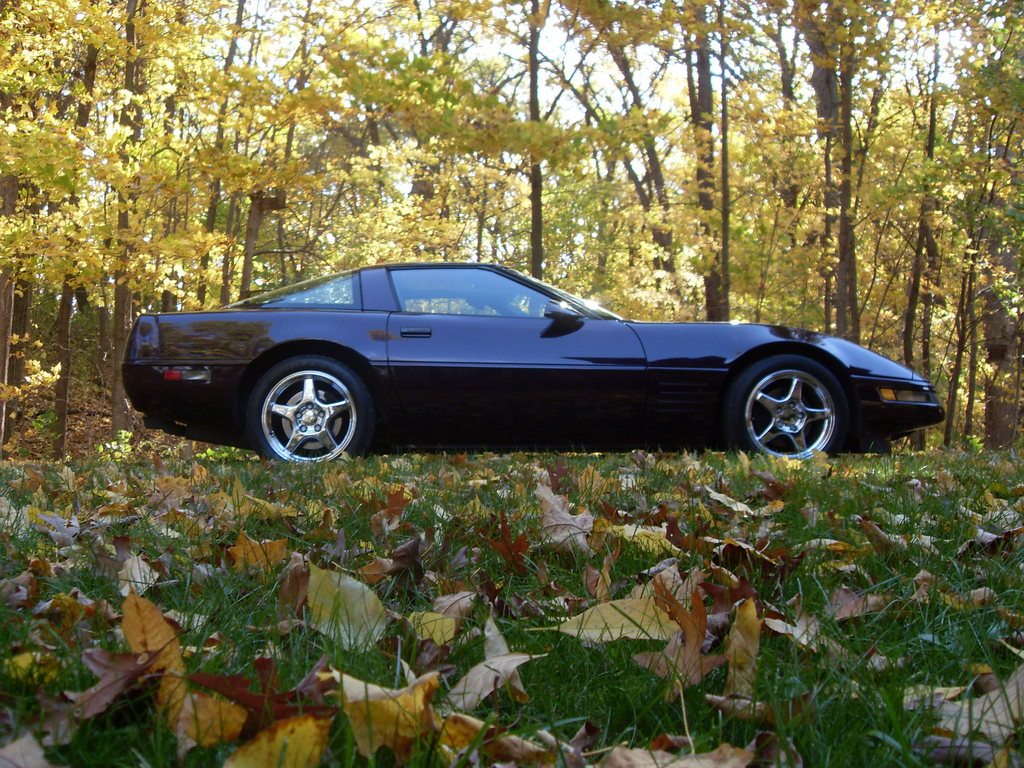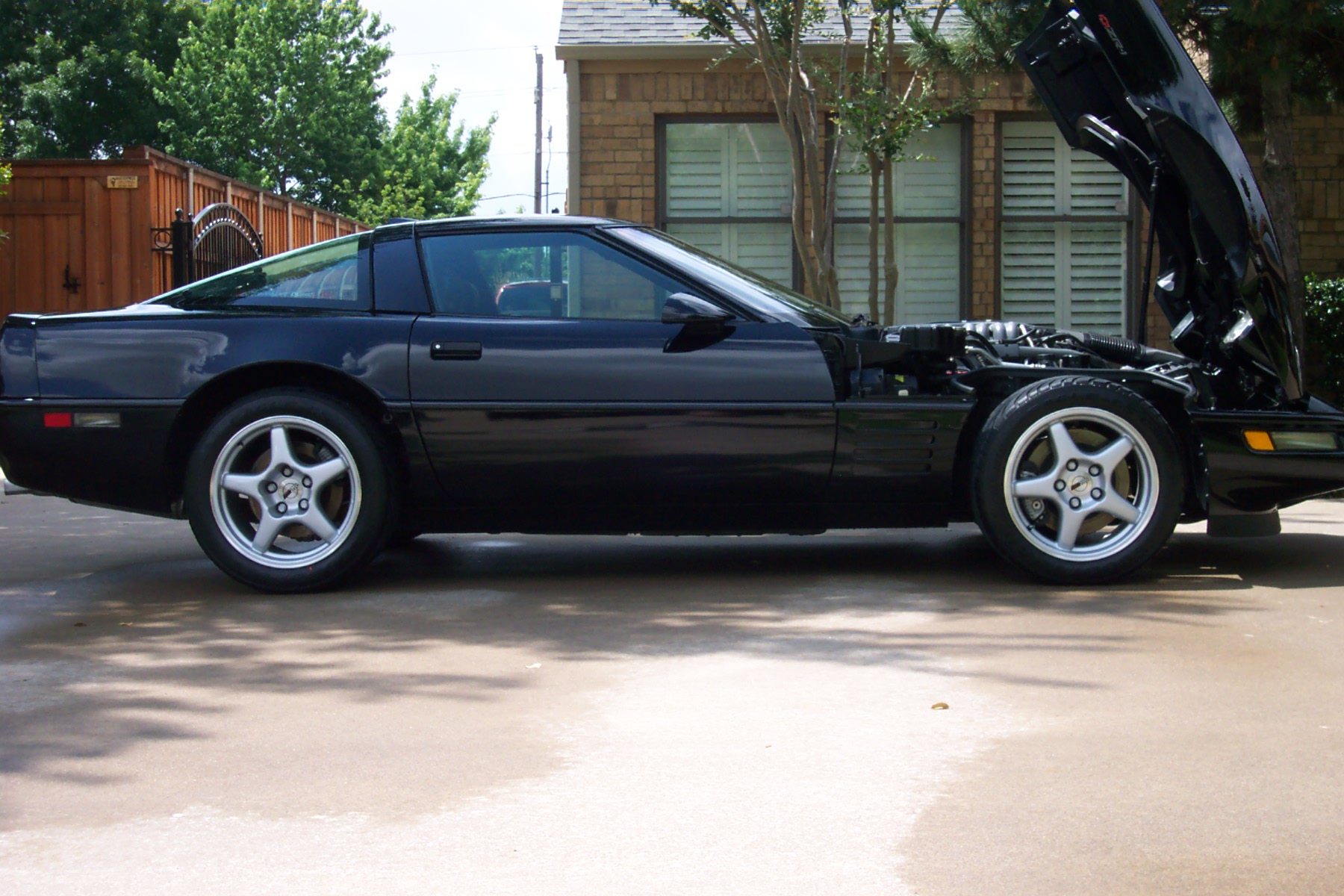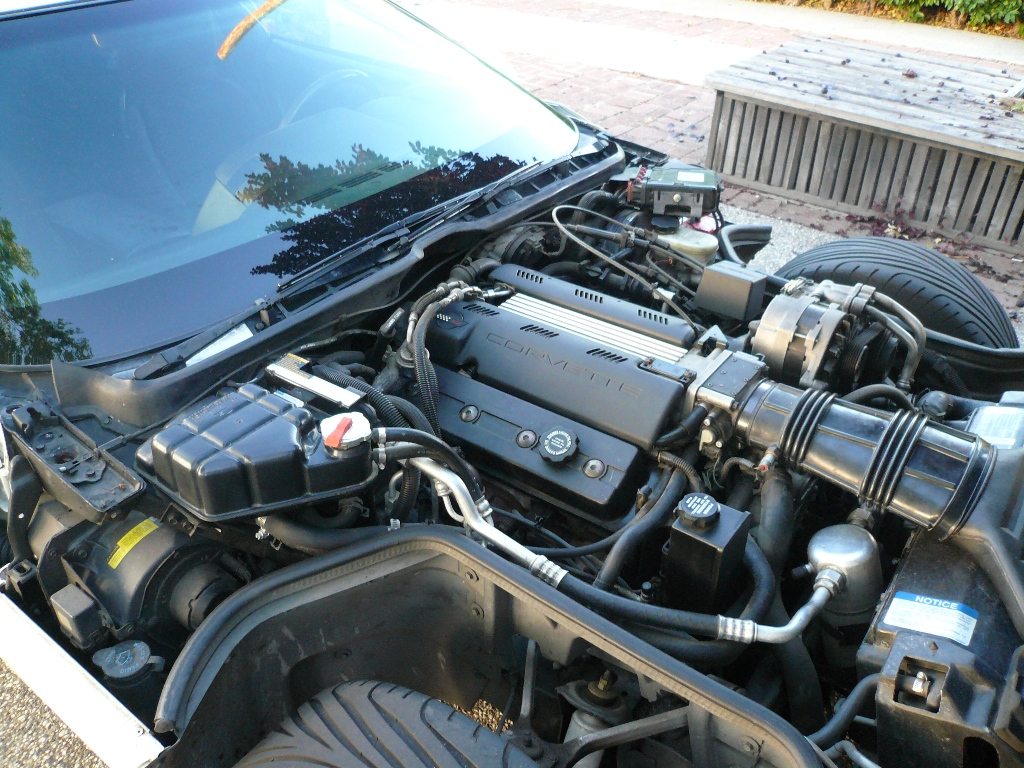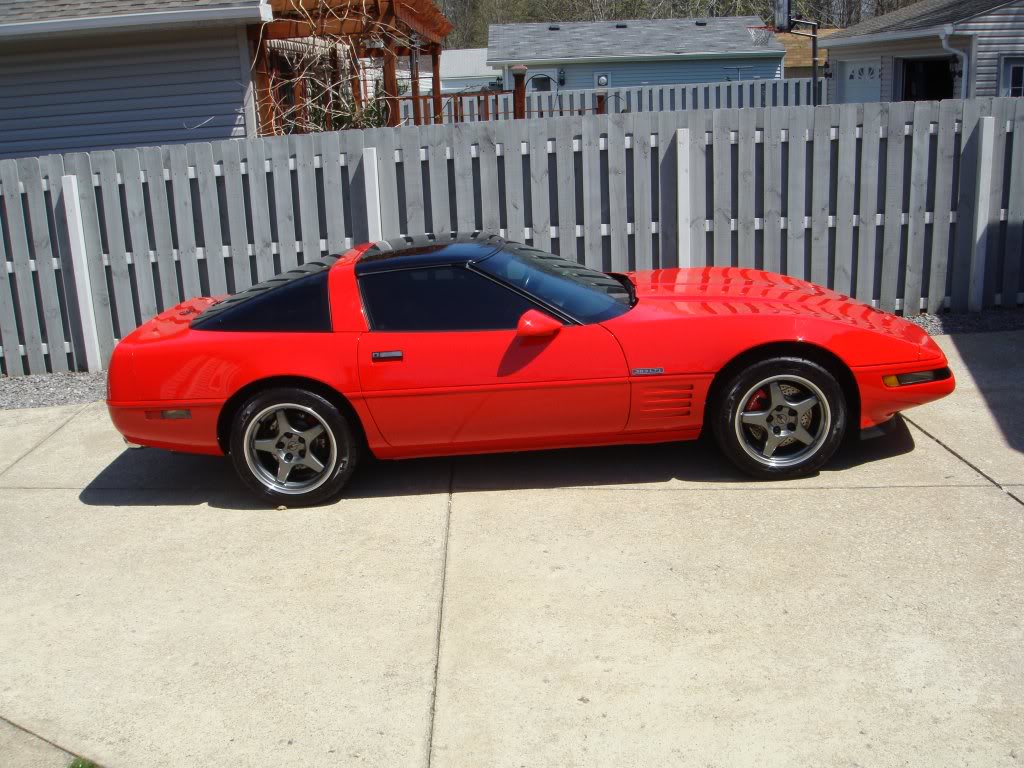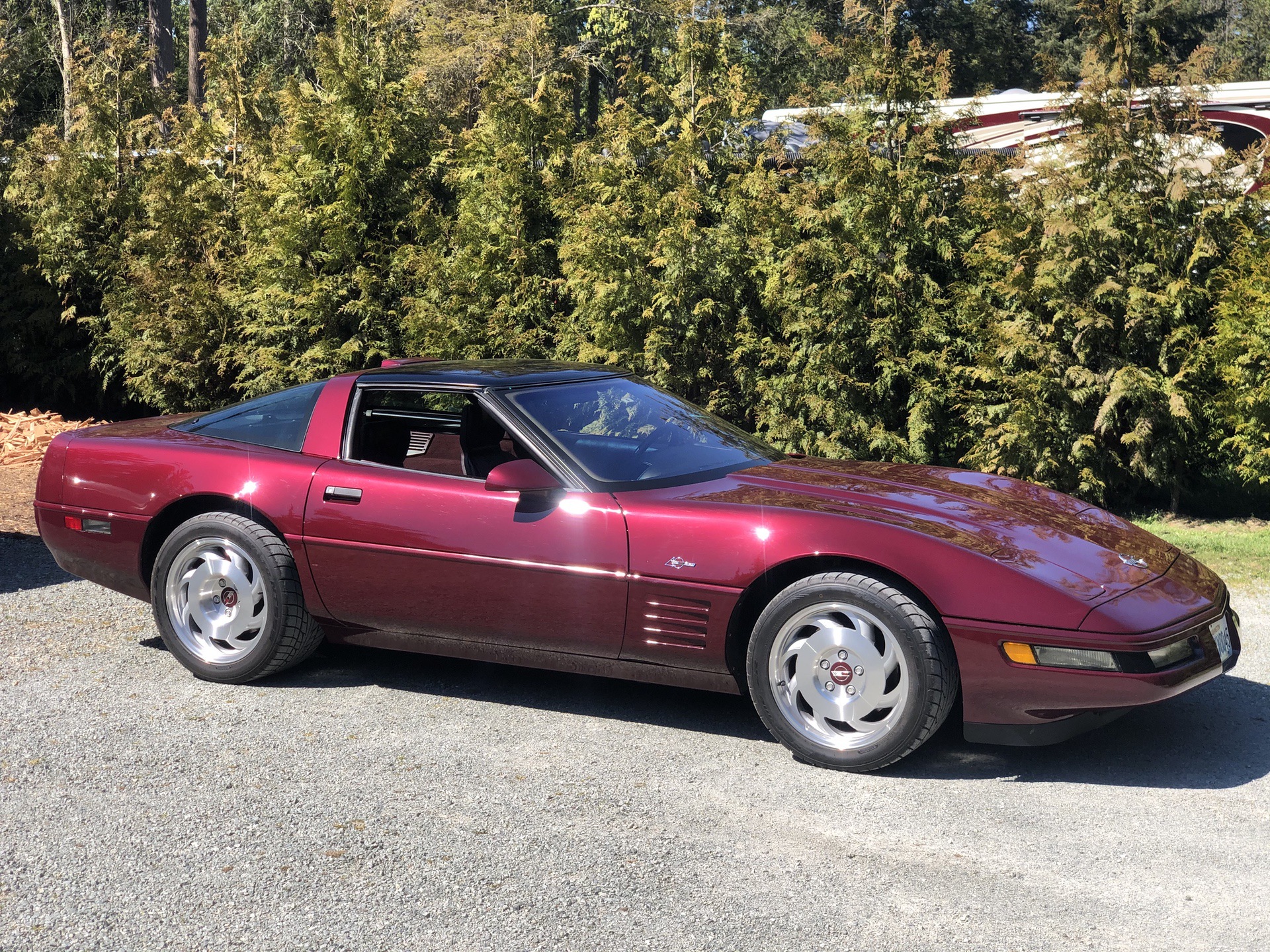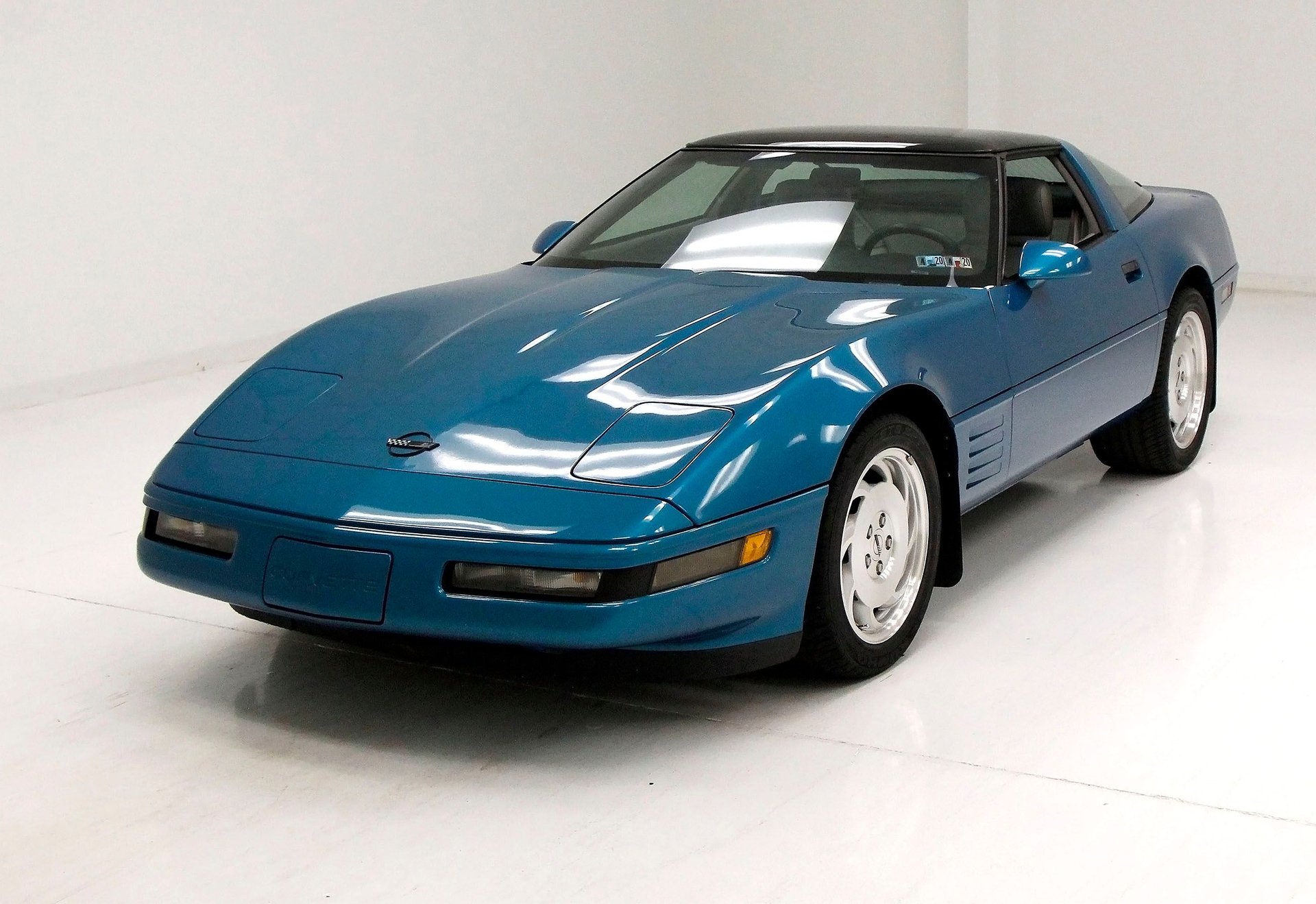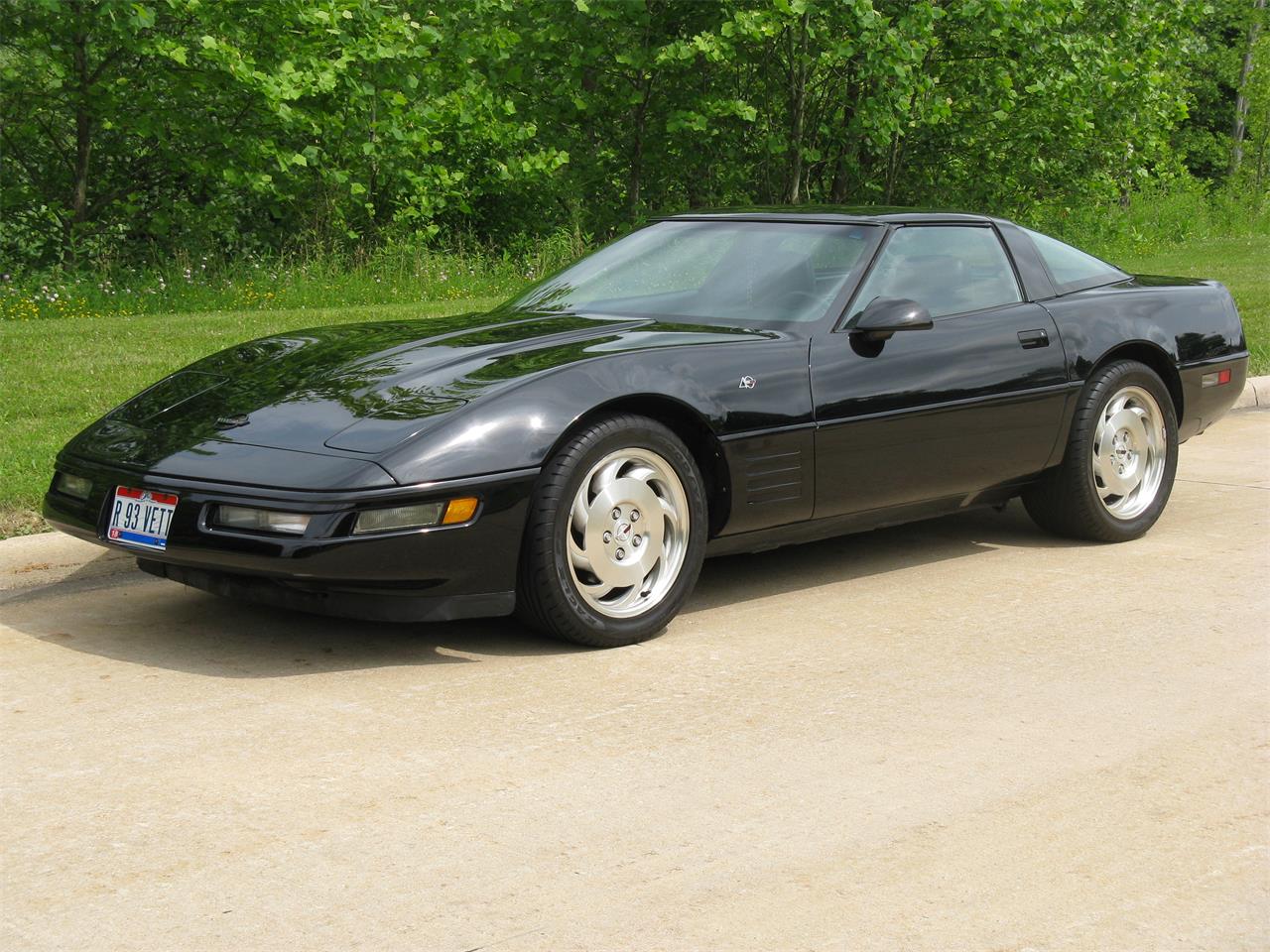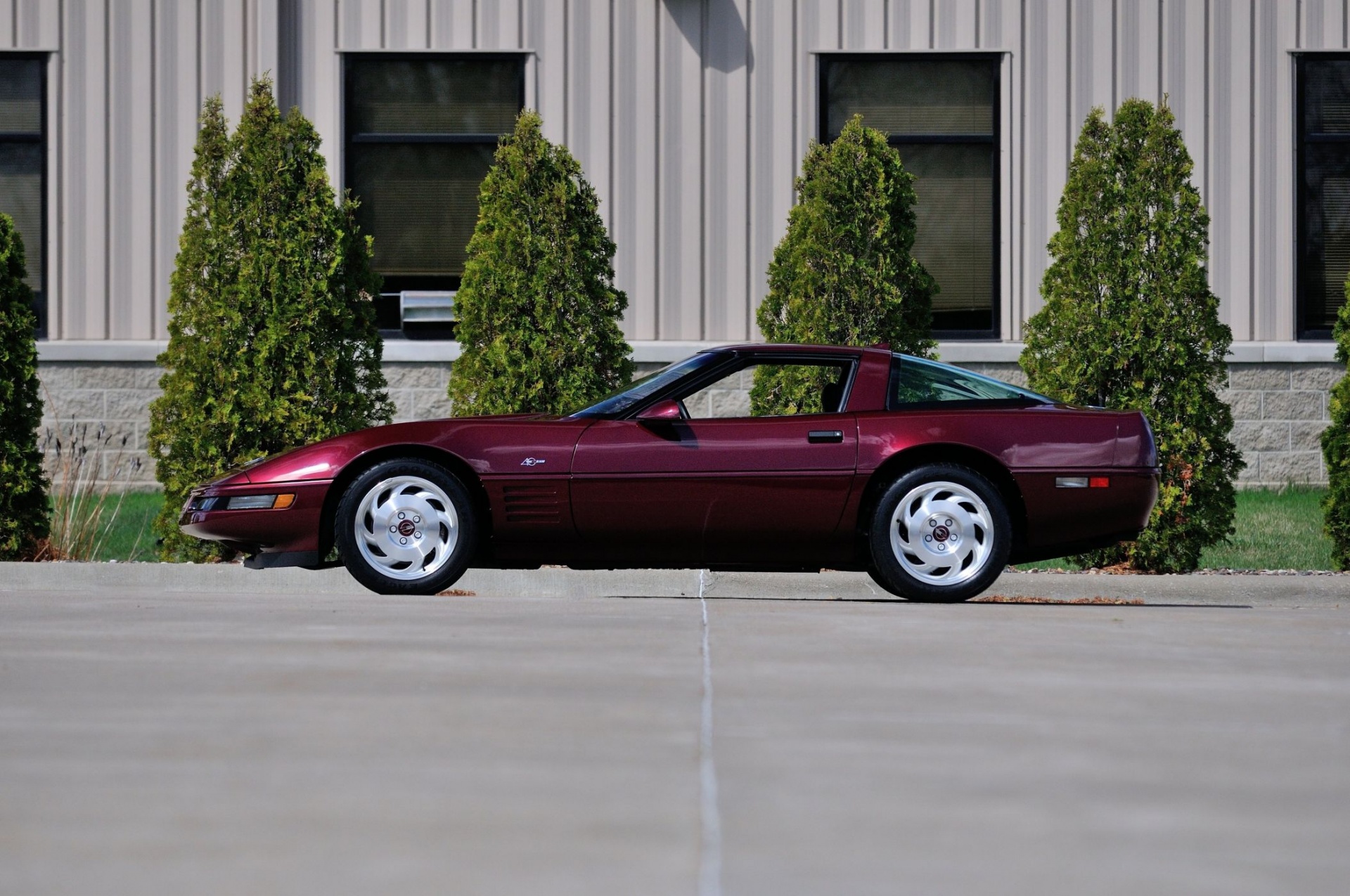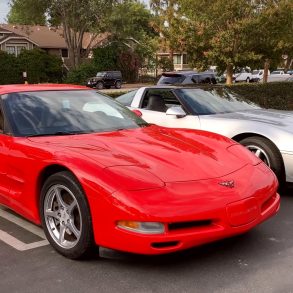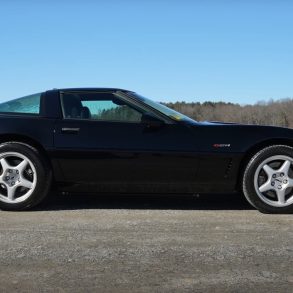1993 Corvette – The Ultimate Guide
When Harley Earl first envisioned his two-seat roadster in 1953, it is unlikely that even he would have been able to fathom the long-term commercial success the Corvette would achieve. Both on the road and on the racetrack, the Corvette had demonstrated again and again that it could compete with some of the fiercest automotive competitors from around the world.
From its earliest days racing against the Porsche 356 at the 24 Hours of LeMans to competing at some of the most grueling road courses of the day, the Corvette had become a world leader that had celebrated decades long victories in sales, showmanship and performance. Now, as the Corvette prepared to turn 40, Chevrolet decided to honor the milestone by releasing a special edition Corvette to pay homage to the American legend.
When Harley Earl first envisioned his two-seat roadster in 1953, it is unlikely that even he would have been able to fathom the long term commercial success the Corvette would achieve. Both on the road and on the racetrack, the Corvette had demonstrated again and again that it could compete with some of the fiercest automotive competitors from around the world.
From its earliest days racing against the Porsche 356 at the 24 Hours of LeMans to competing at some of the most grueling road courses of the day, the Corvette had become a world leader that had celebrated decades long victories in sales, showmanship and performance.
Now, as the Corvette prepared to turn 40, Chevrolet decided to honor the milestone by releasing a special edition Corvette to pay homage to the American legend. While the official 40th Anniversary Edition Corvette was ordered by many Corvette purists to celebrate the momentous occasion, there was another Corvette package offered in 1993 that catered more to the performance fanatics.
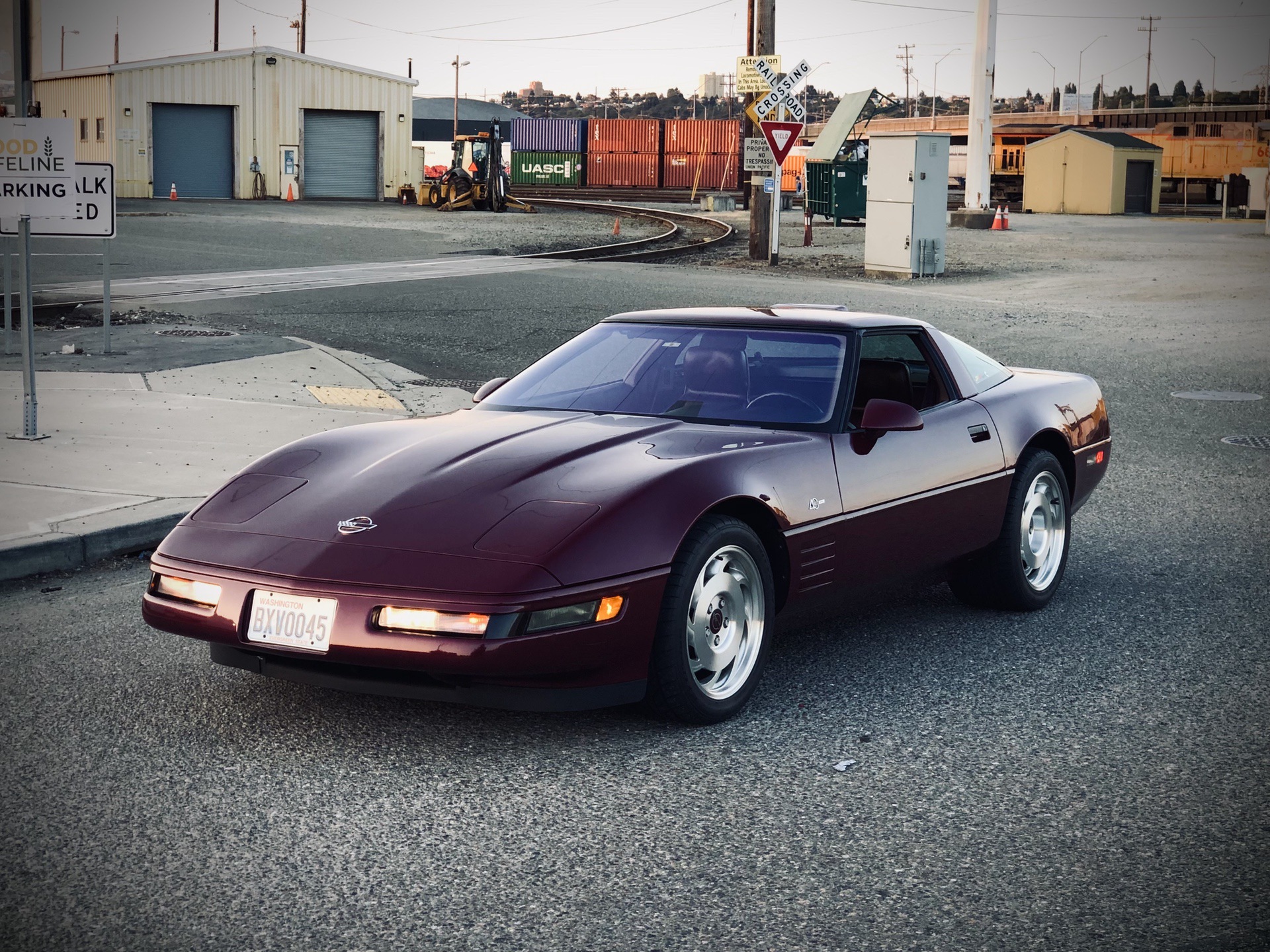
Florida-based Greenwood Automotive Performance unveiled a bolstered Corvette coupe. Named only with the distinction “G572” (so named for the size of the engine), the Corvette featured functional aero body panels and a reinforced chassis that were specifically modified to support the massive torque put on them by the car’s 575 horsepower engine.
Under the car’s hood lived a 9.4-Liter (572 cubic inch) Chevy V-8 that was mated to a GM four-speed automatic transmission. When this special edition Corvette was run with the throttle full open, the Corvette could accelerate from zero-to-60 miles per hour in just 3.4 seconds, and best a quarter mile at just 11.5 seconds at a speed of 135 miles per hour.
Additionally, when running fully open, the Corvette could hit and maintain a speed of 218 miles per hour. Of course, achieving that level of incredible power has always been an expensive undertaking, as was the case with the G572, which carried a price tag of $179,333.
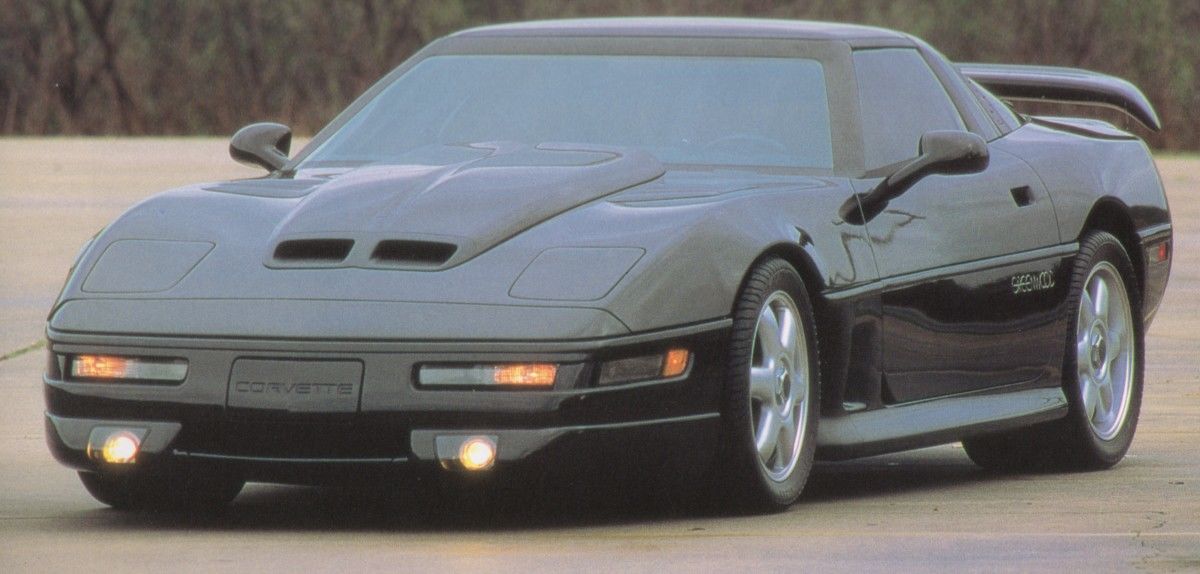
Sadly, the base model coupes received virtually no cosmetic upkeep from the previous model year – but with just two exceptions: First, while the wheels on the Corvette included the same rotary cut pattern as that of the 1992 Corvette, the wheels still reflected a different physical appearance because they were machined differently than the wheels found on the 1992 Corvette.
DID YOU KNOW: The 1993 ZR-1 Chevy Corvette received a huge power boost jumping 15 horsepower from 385hp to 405hp. Torque was also improved from 370 lb-ft to 385 lb-ft. This was accomplished through porting changes on the head and valvetrain, an electric EGR valve improving emissions, platinum tipped spark plugs, and four bolt main bearing caps.
Additionally, the 1993 Corvette would be the last model year that consumers could order cloth seats as an option, and it was a sound decision on the part of GM to eliminate this RPO from all future models, especially given the fact that only 426 Corvettes were ordered with that option.
Finally, the size of the front wheels on the base model Corvette coupe and convertible were reduced in size from 9.5×17 to 8.5×17 and the corresponding front tire sizes were reduced from P275/40ZR17 to P255/45ZR17. Similarly, the rear tire size was increased from P275/40ZR17 to P285/40ZR17. For Corvettes that included RPO Z07, 9.5×17 wheels and P275/40ZR17 tires were used on both the front and rear.
As in years past, the tires were courtesy of Good Year and were directional, asymmetric Eagle GS-C’s that were utilized exclusively on the Corvette during their first year of production. While new, these tires did utilize a similar tread pattern as in earlier models, though the tires designed for the 1993 Corvette were better equipped to handle the cornering stresses that occurred on both the inner and outer edges of the tire. Having specially balanced tires was a tremendous improvement to the Corvette’s drivability, though given the unique nature of each tire, owners had to be cautious about replacement given that no tire was interchangeable with another.
Mechanically the 1993 Corvette Coupe also remained virtually unchanged, although some small, but significant improvements had been made to make the Corvette continually more competitive on the racetrack.
While the LT-1’s horsepower remained at 300, several modifications were made to make the engine quieter. First, the heat shield design was changed from a single piece stamping to a two-piece sandwich type shield that was self-damping.
Second, the LT-1 camshaft exhaust lobe profile was modified to reduce the exhaust valve closing velocity. Additionally, a shortening of the inlet stroke duration allowed a longer exhaust stroke duration with no increase in overlap area between the two strokes. A side benefit of this modification resulted in a small, but significant, increase in torque from 330 to 340 lbs/ft of torque at 3,600rpms.
Third, new thermostat polyester valve covers replaced the 1984–1992 magnesium covers. These covers were isolated from the heads by a gasket in the normal location, but also by gaskets under the heads of the mounting hardware.
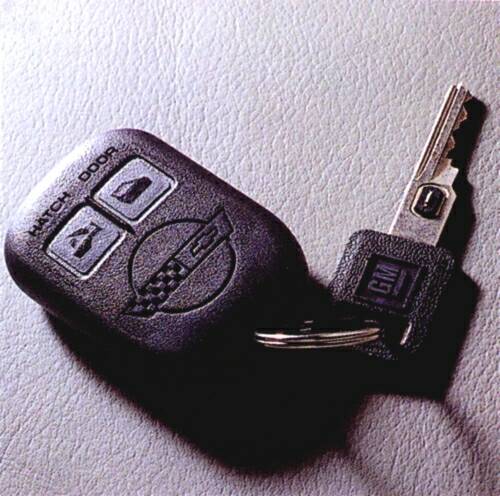
Perhaps one of the most notable improvements to the 1993 Corvette was the introduction of a passive keyless entry (PKE) system. Unlike other keyless entry systems, which required the vehicle owner/operator to unlock the vehicle by pressing a “LOCK/UNLOCK” button on a small transmitter, the PKE system automatically communicated with the Corvette when the driver was in the general proximity of the vehicle.
The battery operated transmitter would simply transmit a unique code which could be picked up by the Corvette through one of two antennas – in coupes, the antennas were located in the driver door and the rear deck lid, – in convertibles, the antennas were located in both the driver and passenger doors.
When a driver approached the Corvette, the PKE would unlock the doors, turn on the interior lights, and deactivate the theft deterrent system. The PKE system could be turned off completely, and could also be programmed to lock or unlock the driver’s door only, or both the driver and passenger doors. Coupes that were equipped with the PKE system included an extra button on the transmitter that would unlock the rear hatch.
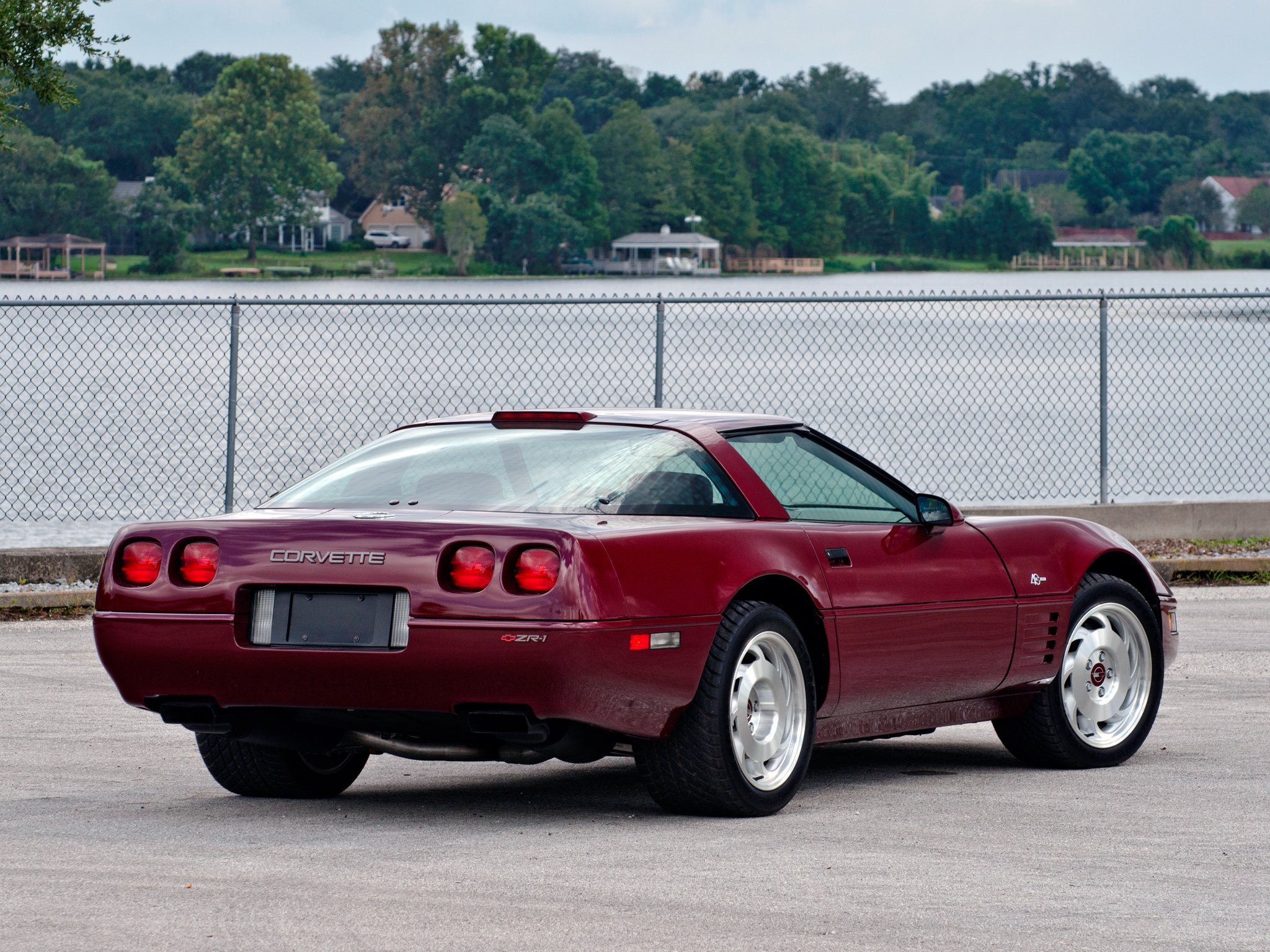
The LT5 engine (featured in the ZR-1 Corvette) received a minor boost in power. For 1993, the ZR-1 Corvette’s horsepower was increased from 375hp to 405hp. Given the overall lack of ZR-1 sales, many questioned the decision to improve upon the performance of the LT5 engine at all, though most critics agreed that doing so would again increase the performance gap between the ZR-1 and the base coupe, putting the ZR-1 back in a class of its own. This power increase was achieved as the result of a series of changes to the LT5’s cylinder heads and valvetrain. Additional modifications were made to the LT5 as well including the introduction of four bolt main bearings, platinum tipped sparkplugs, an electrical, linear EGR (Exhaust Gas Recirculation) system for improved emission control and the requirement of using Mobil 1 synthetic oil as the only spec compliant engine lubricant. These improvements would help propel the ZR-1 to set a new top speed record of 179 miles per hour, which was faster than any other unmolested Corvette ever.
Despite the absence of notable, physical changes to the design of the car, the overall sales numbers of the 1993 Corvette actually increased over previous years. A total of 21,590 Corvettes were manufactured and sold, marking 1993 the first model year in four years to actually witness an increase in its numbers. Additionally, the ZR-1 Corvette received the accolades of being the winner of the top speed category of Car & Driver’s “Ten Best” issue (January, 1994). Despite this, the ZR-1’s numbers continued to head south, with just 448 units being produced that year.
1993 Corvette Specifications & Performance
See the complete breakdown of technical specifications for the 1993 Corvette, including engine, suspension, brakes, body dimensions, and power. Read more: 1993 Corvette Specifications.
Engine, Transmission & Performance
When the horsepower was beefed up on the base Corvettes with the new LT1 engine that was introduced in 1992, the ZR-1 models seemed much less desirable as the base models weren’t that far away from them any more in terms of performance. Chevy apparently sought to change that in 1993 when it modified the LT1’s engine to produce 405 horsepower. The increased performance came mainly from modified cylinder heads and valve train, but was also helped by a Mobil1 synthetic requirement, platinum-tipped spark plugs and an electrical, linear exhaust gas recirculation system. The new-found power meant that the new ZR-1 was the most powerful Corvette that had been produced up to that point, even when taking into account the net horsepower ratings versus the previously used gross ratings. Read more: 1993 Corvette Performance.
1993 Corvette Vehicle Identification Numbers (VIN)
The last six digits begin at 100001 and run thru 121142, accounting for each of the 21,142 Corvette Coupes/Convertibles built in 1993. Additionally, the last six digits of the ZR-1 VIN begin at 800001 and run thru 800448, accounting for each of the 448 ZR-1 Corvette Coupes built in 1993. Each Vehicle Identification Number (VIN) is unique to an individual car. For all 1993 Corvettes, the Vehicle Identification Number was stamped on a plate on the inner vertical surface of the left windshield pillar visible through the windshield. Read more: 1993 Corvette VINs.
1993 Corvette Price & Options
Core Features & Factory Options
1993 marked the 40th year of Corvette production and the occasion was observed with the introduction of a 40th Anniversary Package. Z25 cars featured a special “Ruby Red” paint, Ruby Red leather power sport seats with headrest embroidery and emblems. The leather interior on non-Z25 Corvettes also featured 40th anniversary embroidery on the seat headrests. Right: the emblems included this good looking brightwork located behind the front wheels and above the beltline. The Z25 option was available on both coupes (including the ZR-1) and convertibles; quantities were not limited.
New in 1993 was the passive keyless entry (PKE) system which locked and unlocked the doors along with enabling the alarm system based on proximity of the key to the car. It would be standard equipment in all Corvettes up to 1999 models. The front wheels were narrowed to 8.5 inches from 9.5 inches. Engine modifications resulted in quieter operation. The ZR-1 received a 30 hp gain and was rated at 405 hp.
In terms of performance, Motor Trend clocked the Corvette (350ci/405hp) 0-60 mph time in just 4.9 seconds and the quarter mile time of 13.4 seconds.
Colors
Arctic White, Black, Bright Aqua Metallic, Polo Green II Metallic, Competition Yellow, Ruby Red, Torch Red, Black Rose Metallic, Dark Red Metallic, Quasar Blue Metallic. Of the ten colors for 1993, a new Ruby Red color was most popular, making up 31% of total production. Black and White were also popular, with 12.4% and 14% of total production respectively. Torch Red (12.4%) and Polo Green II Metallic (10.1%) were also popular for the 1993 model year. Read more: 1993 Corvette colors.
Pricing & Options
The Base Corvette Coupe with 350 cu. in. 300 hp engine and four speed automatic transmission was $34,595 and the Base Corvette Convertible with 350 cu. in. 300 hp engine and four speed automatic transmission was $41,195. The 40th Anniversary Package (RPO Z25) was $1,455.
| CODE | DESCRIPTION | QUANTITY | RETAIL PRICE |
| 1YY07 | Base Corvette Sport Coupe | 15,898 | $34,595.00 |
| 1YY67 | Base Corvette Convertible | 5,692 | $41,195.00 |
| AC1 | Power Passenger Seat | 8,509 | $475.00 |
| AC3 | Power Driver Seat | 766 | $555.00 |
| AQ9 | Sport Seats, leather | 11,267 | $1,100.00 |
| AQ9 | Sport Seats, White Leather | 622 | $1,180.00 |
| AR9 | Base Seats, leather | 18,067 | $305.00 |
| AR9 | Base Seats, White Leather | 20,626 | $305.00 |
| CC2 | Auxillary Hardtop (convertible) | 976 | $1,995.00 |
| C2L | Dual Removable Roof Panels (coupe) | 4,204 | $950.00 |
| 24S | Removable Roof Panel, blue tint (coupe) | 6,203 | $650.00 |
| 64S | Removable Roof Panel, bronze tint (coupe) | 4,288 | $650.00 |
| C68 | Electronic Air Conditioning Control | 19,550 | $205.00 |
| FX3 | Selective Ride and Handling, electronic | 5,740 | $1,695.00 |
| G92 | Performance Axle Ratio | 2,630 | $50.00 |
| MN6 | 6-Speed Manual Transmission | 5,330 | $0.00 |
| NN5 | California Emission Requirements | 2,401 | $100.00 |
| UJ6 | Low Tire Pressure Warning Indicator | 3,353 | $325.00 |
| UU8 | Stereo System, Delco-Bose | 2,685 | $823.00 |
| U1F | Stereo System With CD, Delco-Bose | 16,794 | $1,219.00 |
| V56 | Luggage Rack (convertible) | 765 | $140.00 |
| Z07 | Adjustable Suspension Package (coupe) | 824 | $2,045.00 |
| Z25 | 40th Anniversary Package | $6,749.00 | $1,455.00 |
| ZR1 | Special Performance Package (coupe) | 448 | $31,683.00 |
Read more: 1993 Corvette pricing and factory options.
1993 Corvette Gallery
See full 1993 C4 Corvette Image Gallery
1993 Corvette Videos
See more 1993 Corvette Videos


